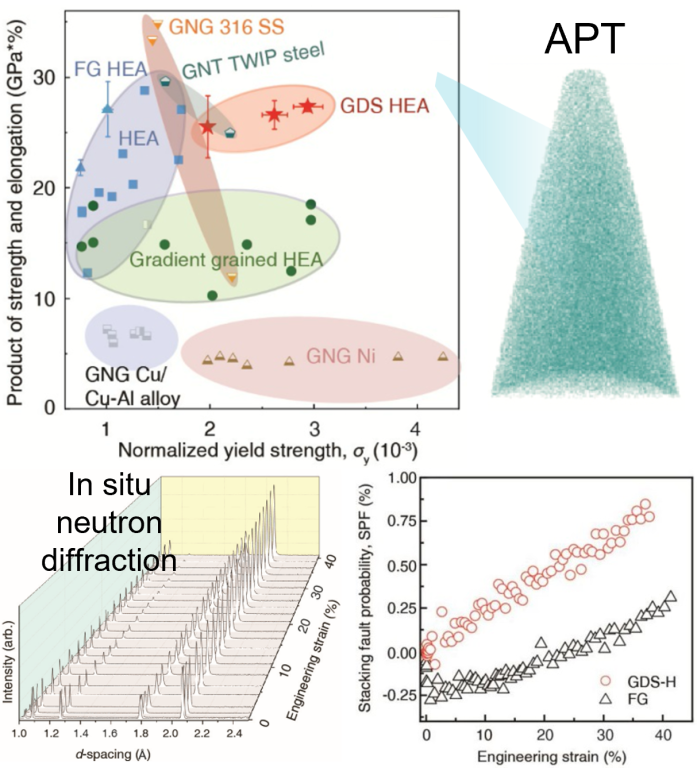
Top: Product of strength and ductility for alloy studied here (GDS-HEA) is compared to counterparts. APT data for the GDS-HEA shows a homogenous distribution of elements along the GDS. Bottom: In situ neutron diffraction results show stacking faults form easier in GDS alloy compared to a fine-grained alloy.
Scientific Achievement
A gradient dislocation-cell structure (GDS) was controllably introduced into a Al0.1CoCrFeNi high-entropy alloy (HEA) via cyclic-torsion, which activated a novel stacking-fault-induced plasticity (SFIP) mechanism and significantly improved the strength and ductility.
Significance and Impact
The GDS can be used for a wide variety of alloys to achieve superior properties for advanced engineering applications.
Research Details
- The GDS Al0.1CoCrFeNi alloys show superior strength/ductility compared to other types of gradient structured alloys.
- Microscopy revealed the GDS and atom probe tomography (APT) confirmed a homogenous distribution of elements.
- In situ neutron diffraction dynamically detected the novel SFIP mechanism and synchrotron diffraction revealed the stacking fault distribution along the GDS.
Q. Pan, L. Zhang, R. Feng, Q. Lu, K. An, A. C. Chuang, J. D. Poplawsky, P. K. Liaw, and L. Lu, "Gradient-Cell-Structured High-Entropy Alloy with Exceptional Strength and Ductility," Science (2021). DOI: 10.1126/science.abj8114



